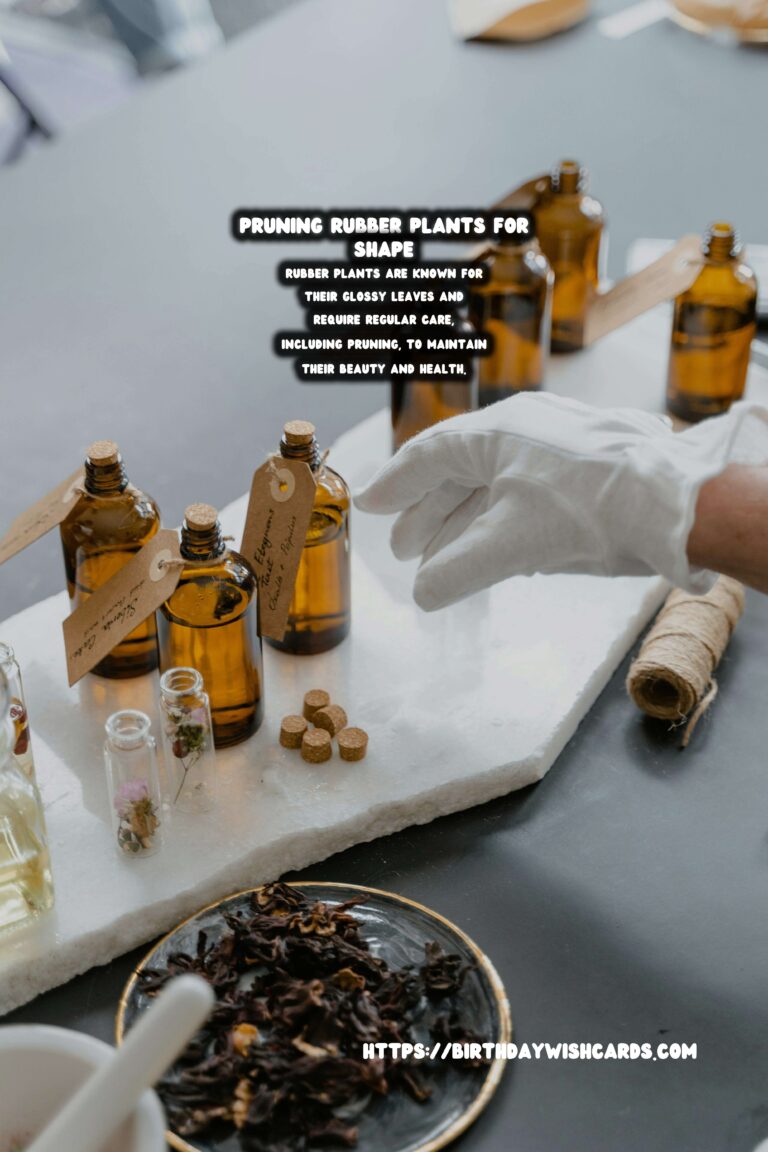
Rubber plants, known for their glossy leaves and robust nature, have become a popular choice for indoor gardening enthusiasts. These plants not only enhance the aesthetic appeal of interiors but also improve air quality. However, to maintain their beauty and health, regular care, including pruning, is essential. Pruning not only helps in maintaining the desired shape but also promotes healthy growth. In this article, we will delve into the best practices for pruning rubber plants to achieve the perfect shape.
Understanding the Growth Pattern of Rubber Plants
Before diving into pruning techniques, it’s essential to understand the growth pattern of rubber plants. Rubber plants typically grow upright with large, glossy leaves. They can grow to impressive heights if not monitored, making regular pruning crucial to keep them manageable indoors. Pruning helps in controlling their size, encouraging bushier growth, and preventing the plant from becoming leggy.
When to Prune Your Rubber Plant
The timing of pruning is critical for the health of your rubber plant. The best time to prune is during the late winter or early spring before the new growth begins. Pruning during the plant’s dormant period allows it to heal faster and prepares it for the growth spurt in spring. Avoid pruning in late fall or winter as this can stress the plant.
Tools Required for Pruning
To prune your rubber plant effectively, you’ll need a few essential tools. These include a pair of sharp pruning shears, gloves to protect your hands from the plant’s sap, and a clean cloth. Ensure that your tools are sterilized before use to prevent any infection or disease from spreading to your plant.
Step-by-Step Guide to Pruning
1. Assess the Plant: Begin by examining your rubber plant. Identify any dead, damaged, or diseased leaves and branches. These should be your first targets for pruning as they can hinder the plant’s overall health.
2. Decide on the Shape: Decide on the desired shape and size of your rubber plant. Whether you want a bushier look or a more upright form, having a clear vision will guide your pruning process.
3. Begin Pruning: Start by removing any dead or damaged leaves with your pruning shears. Make clean cuts at a 45-degree angle to encourage new growth. If you’re looking to reduce the plant’s height, cut just above a leaf node. This will stimulate the growth of side branches, resulting in a fuller plant.
4. Maintain Symmetry: As you prune, step back occasionally to assess the plant’s symmetry. Maintaining an even shape ensures that the plant remains aesthetically pleasing from all angles.
5. Clean Up: Once you’ve finished pruning, wipe the plant’s leaves with a clean, damp cloth to remove any dust or sap. This will keep the leaves shiny and healthy.
Post-Pruning Care
After pruning, your rubber plant will need some extra care. Ensure it receives adequate sunlight and water as it recovers. Avoid overwatering, as this can lead to root rot. Regularly check for any signs of stress or disease in the weeks following pruning.
Benefits of Regular Pruning
Regular pruning offers numerous benefits for rubber plants. It encourages bushier growth, prevents legginess, and helps maintain the plant’s health by removing dead or diseased parts. Moreover, a well-pruned rubber plant can become the focal point of any room, adding a touch of natural elegance.
Conclusion
Pruning is a vital aspect of rubber plant care that ensures your plant remains healthy and visually appealing. By following the proper techniques and timing your pruning sessions, you can shape your rubber plant to fit your aesthetic preferences while promoting its overall health.
Rubber plants are known for their glossy leaves and require regular care, including pruning, to maintain their beauty and health. The best time to prune rubber plants is during the late winter or early spring before new growth begins. Pruning helps in controlling the size of rubber plants, encouraging bushier growth, and preventing them from becoming leggy. Regular pruning offers numerous benefits such as bushier growth, preventing legginess, and maintaining the plant’s health. A well-pruned rubber plant can become the focal point of any room, adding a touch of natural elegance. 

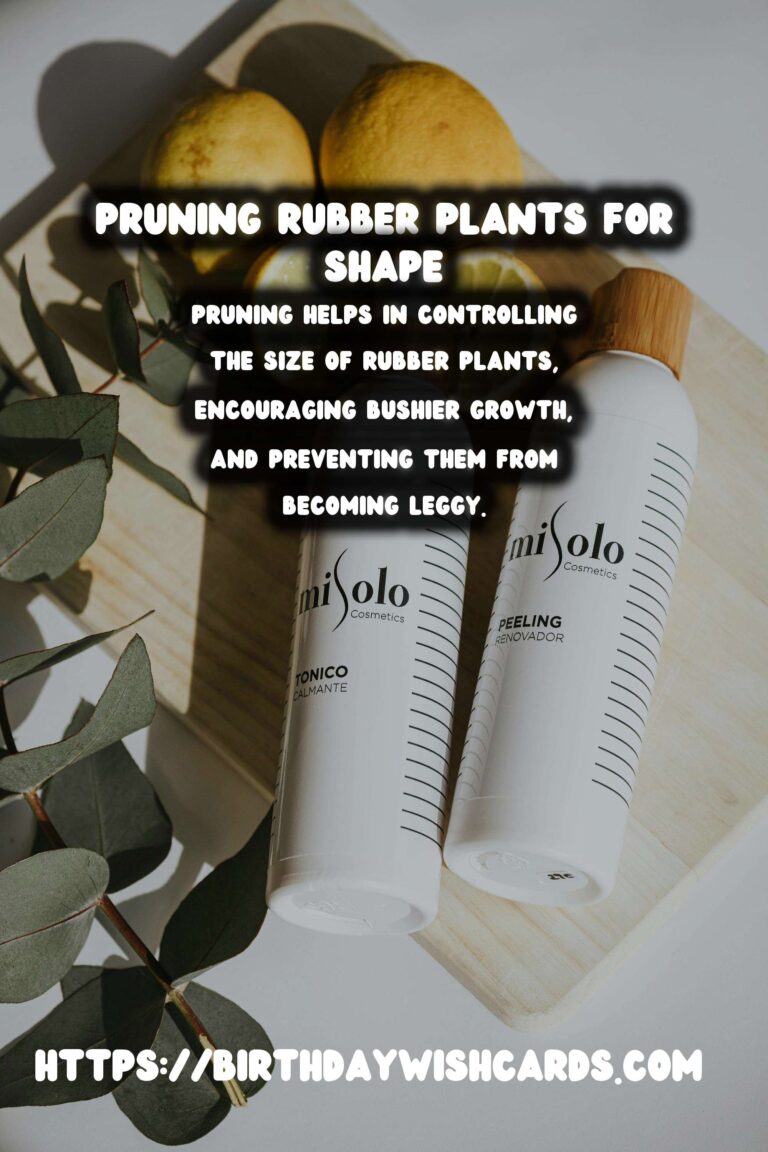


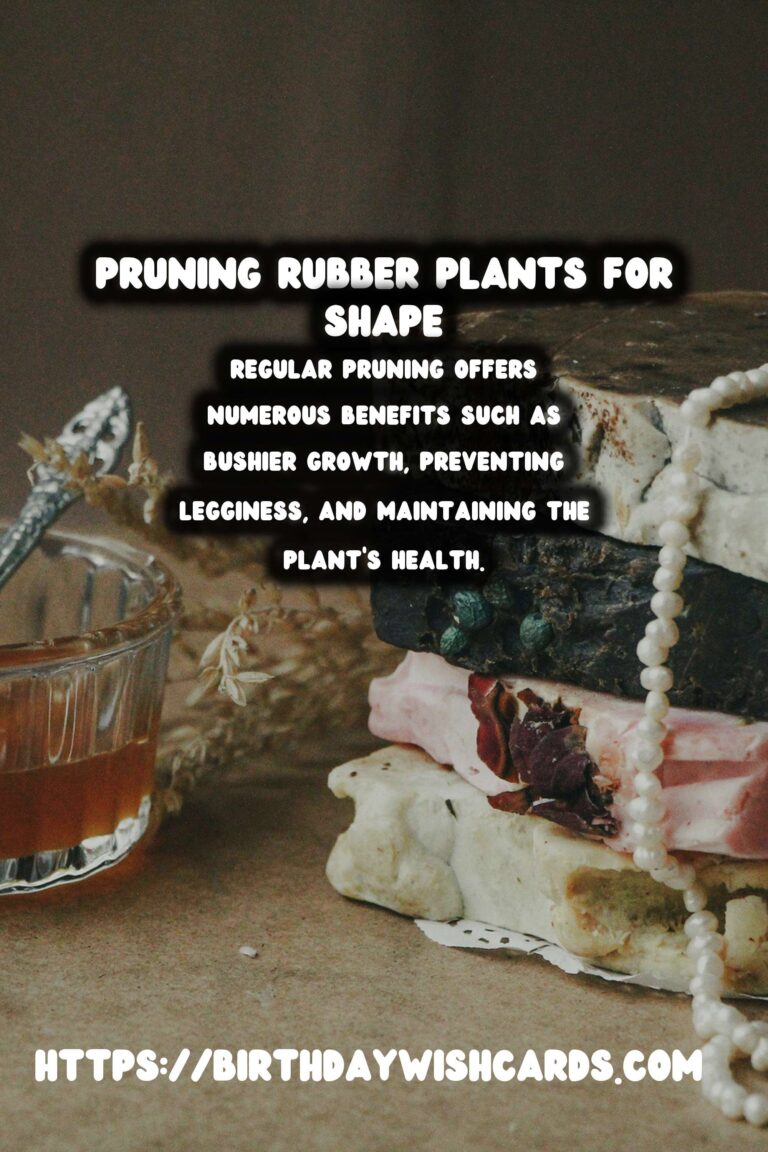

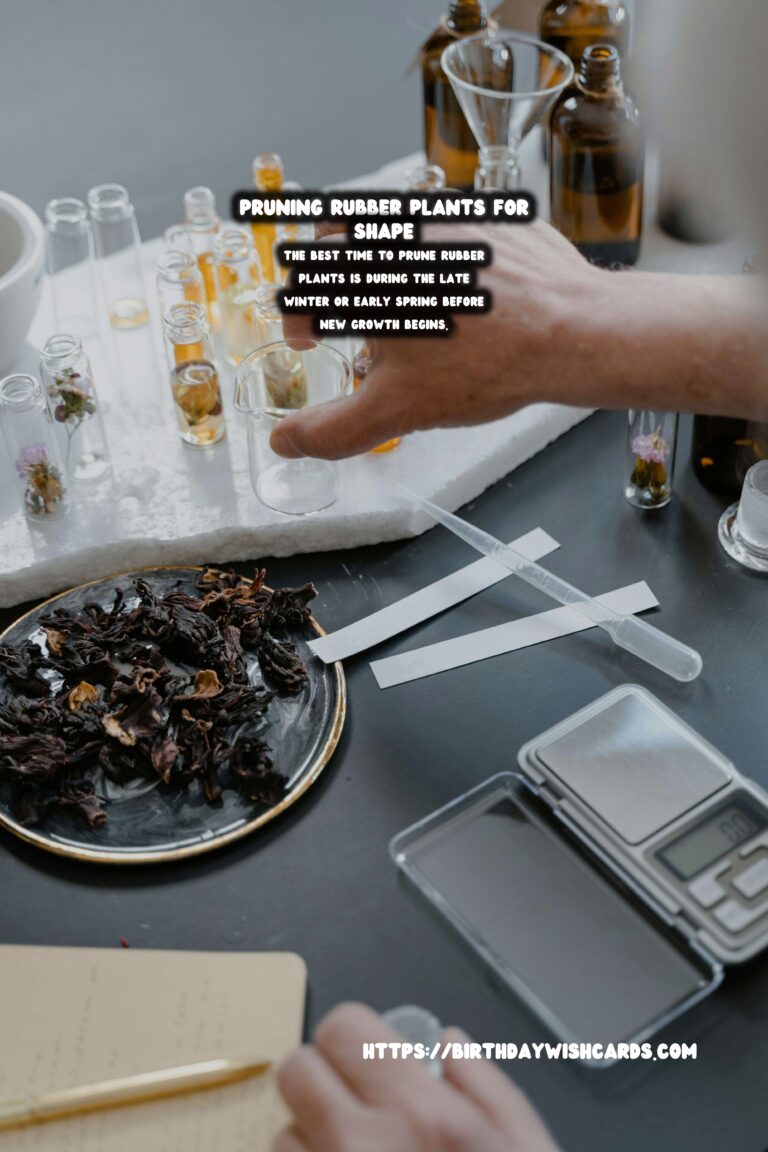

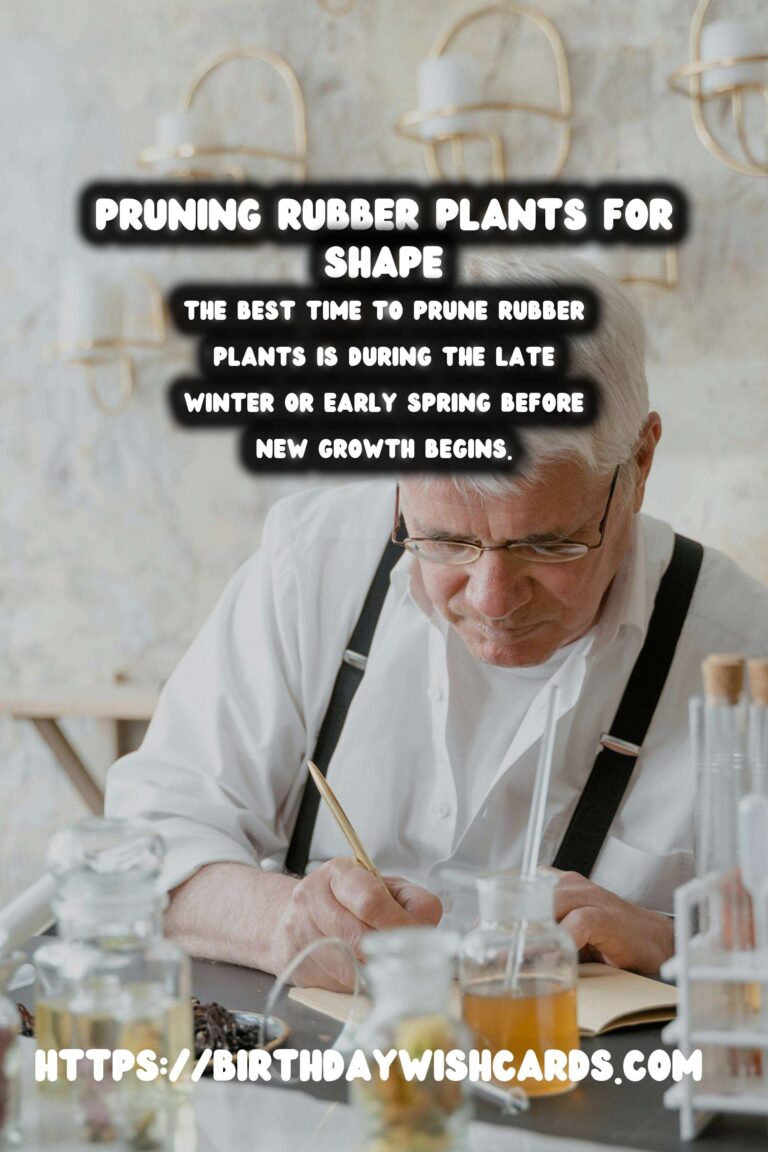
#RubberPlants #Pruning #GardeningTips #IndoorPlants #PlantCare




